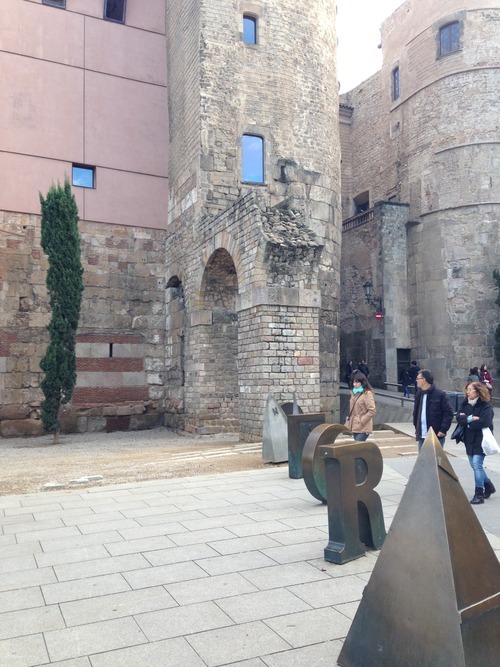
The arch is the last remaining part of the Bareclona aqueducts. Barcelona started as a very small Roman city in 20 B.C. It served as a retirement community for retired Roman soldiers because it was easy to defend (there is a tall mountain called Montjuic that looks over the sea and land) and the temperature is very moderate. The letters spell out “Barcino” which is the original name of the city. Also visible attached to the building and the aqueducts is some of the last remains of the Roman wall around the city.
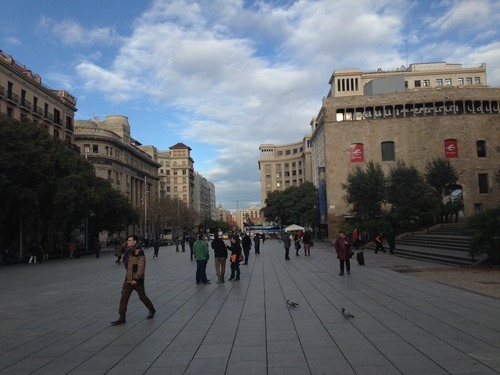
The Plaza de el Seu in front of the Cathedral.
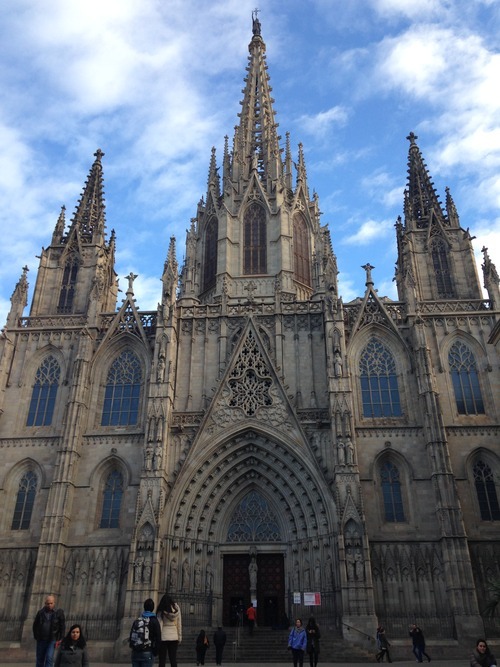
Barcelona’s one true Cathedral, The Cathedral of the Holy Cross and Saint Eulalia (or just “El Catedral de Barcelona”). The typical Catalan (Northeast Spain) Gothic facade was destroyed by a millionaire who thought it was ugly and had it rebuilt to look more like the rest of Europe. This is just one of the many examples of Barcelona ignoring it’s own history and building on top of, around, or bulldozing over important historical places.
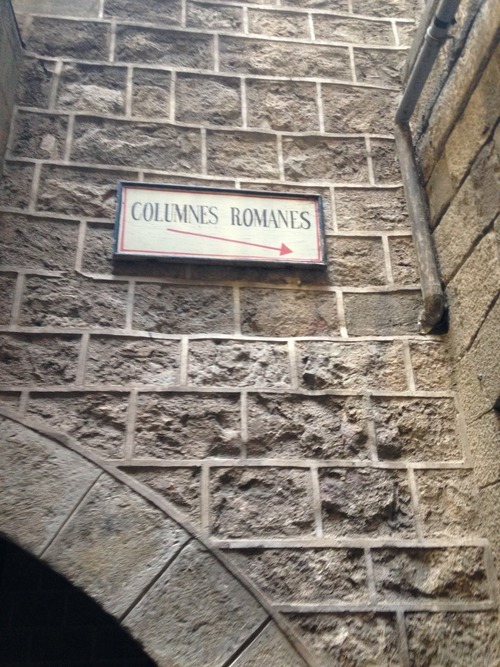
A sign for the Roman columns which are hidden in the center of an apartment complex, another example of Barcelona’s historical insensitivity.
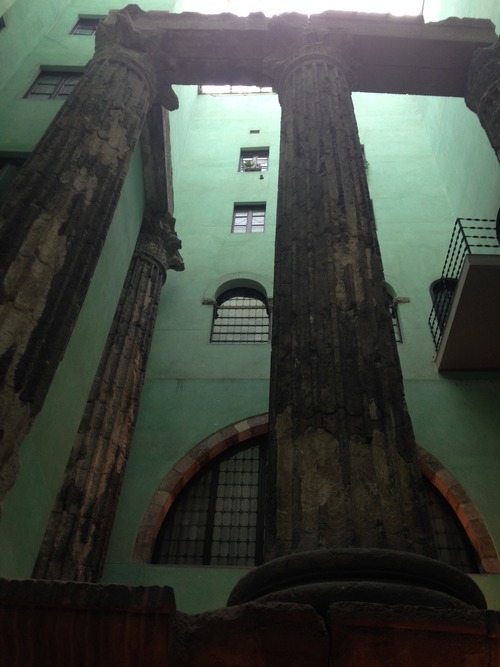
The beautiful Roman columns hidden inside an apartment building. They are the only remnants of the Roman temple in Barcelona. Even the smallest of Roman cities had a temple, a forum, and a wall.
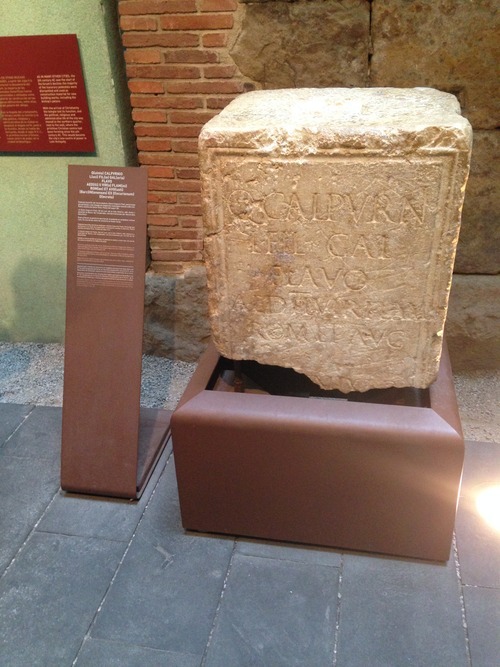
The original plaque of the temple.
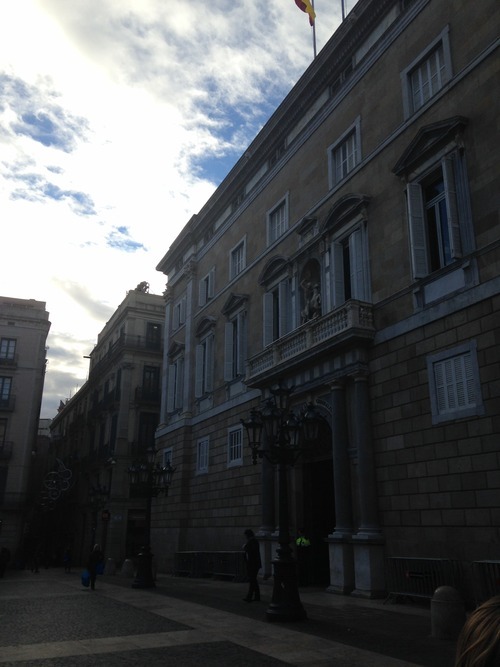
The house of the Catalan government.
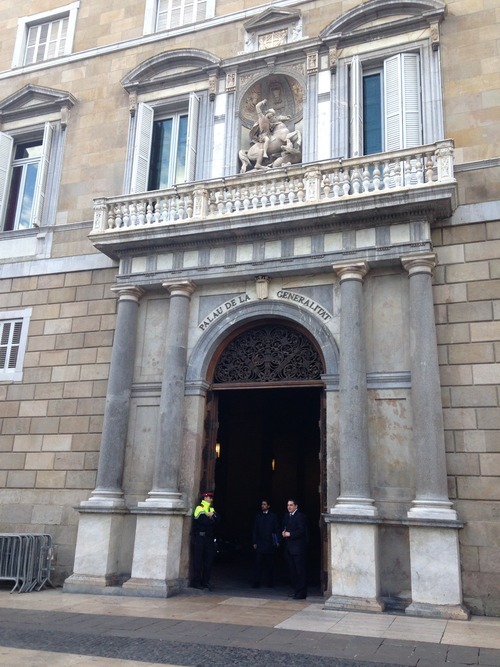
The statue is of a man on a horse slaying a dragon. It is based off of the fable of Saint George who slayed a dragon to save the princess. After the dragon was slayed a single red rose grew from his blood. Because of this, on the day of Sant Jordi, men give their significant others a single red rose as a token of their love.
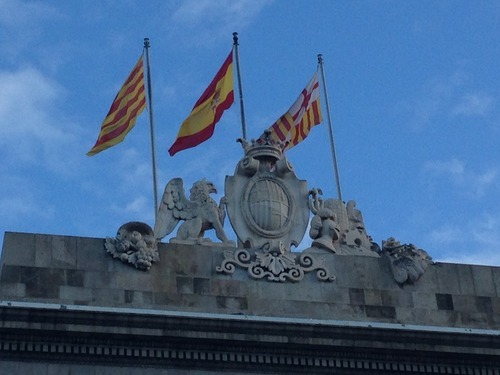
Many people who live in Barcelona don’t see themselves as Spanish, but rather as Catalan. Because of this, virtually nobody has a Spanish flag flying on their property. The only real exception to this is the Town Hall building which is funded by the government and therefore is required to fly a Spanish flag. The flags represent (from left to right): Catalonia (the region is Barcelona is in, represents the blood of a king which he dragged down a flag while he was dying in battle), Spain, and the city of Barcelona.
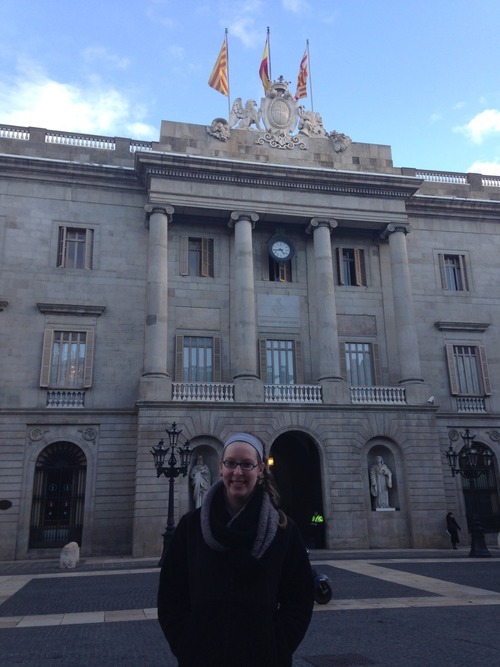
Me in Plaza Sant Jaume in front of the Town Hall building.
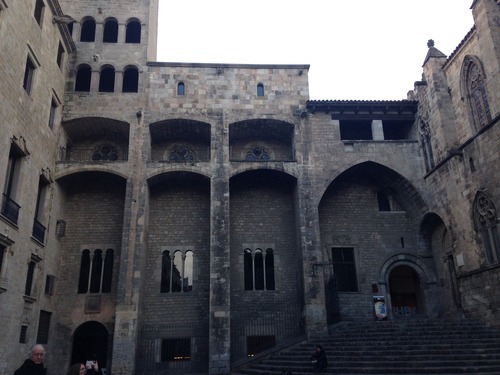
This is Placa del Rei (Plaza of the Kings) where prisoners were kept during the Inquisition. While Barcelona only burned approximately 35 people at the stake, they would have been burned in this plaza, right where we were standing. It was super creepy being there after she said that!
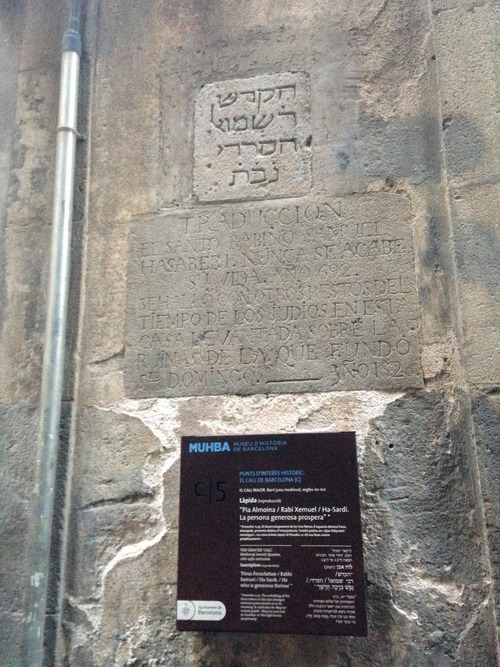
The Jews and Moors were the most persecuted peoples in Spain. Eventually the Jews were asked back to the country for awhile. During this time they were allowed to live in a very certain area of the city where all of the streets were called “Call” to signify that Jews lived there. There aren’t many signs that the Jews ever lived there though. This plaque on a small synagogue is one of the only archeological remnants of the Jewish town. The Jews were then pushed out of the city again and were not asked back again until fairly recent times.
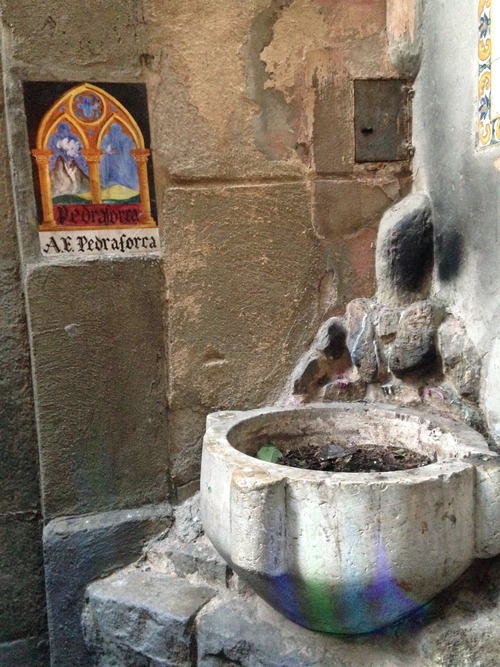
This monument is for Saint Eulalia, a 13 year old girl who was one of the first Christian martyrs in Barcelona. The Cathedral is dedicated to her and she is supposedly buried there. This monument is next to a street called Baixada de Santa Eulalia, or “The Descent of Eulalia”. As one of her thirteen tortures by the Romans, she was placed in a barrel filled with broken glass and rolled down the hill. The hill is supposedly the street right next to this monument. She was eventually decapitated, and according to legend, a dove flew from her neck after death.
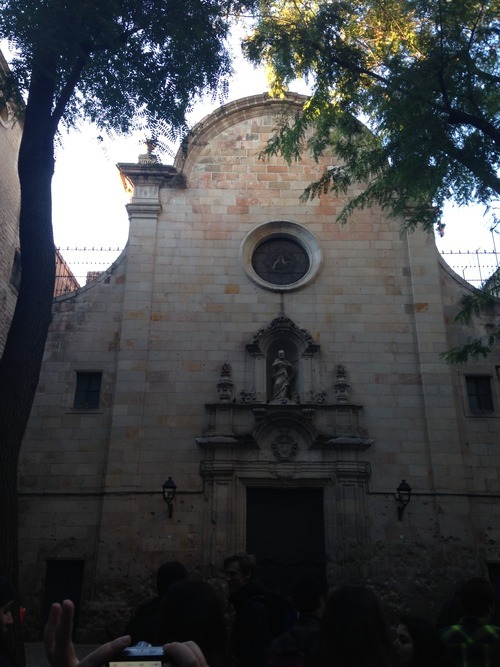
This building was in the Plaza de Sane Felipe Neri. The building shown was once an orphanage. During the Spanish Civil war, general Francisco Franco dropped a bomb in this plaza, destroying parts of the building and killing the 20 orphans inside. Today, this building is a school, in honor of the orphans who died that die. In addition, if you look carefully at the bottom of the building, you can see bullet holes sustained during firing squad executions in the Civil War. When we arrived here on the tour, school had just been let out and there were so many adorable children running around the plaza and playing on the buildings. So adorable!
Overall, it was a really cool tour and it is definitely one of the most beautiful parts of the city. I learned a lot more than I thought I would and am so glad I went on the tour! The Gothic Quarter is so full of history and I love that about it! I can’t wait to go back again with my class to learn even more!!
Location: Barrio Gotico, Barcelona, Spain



